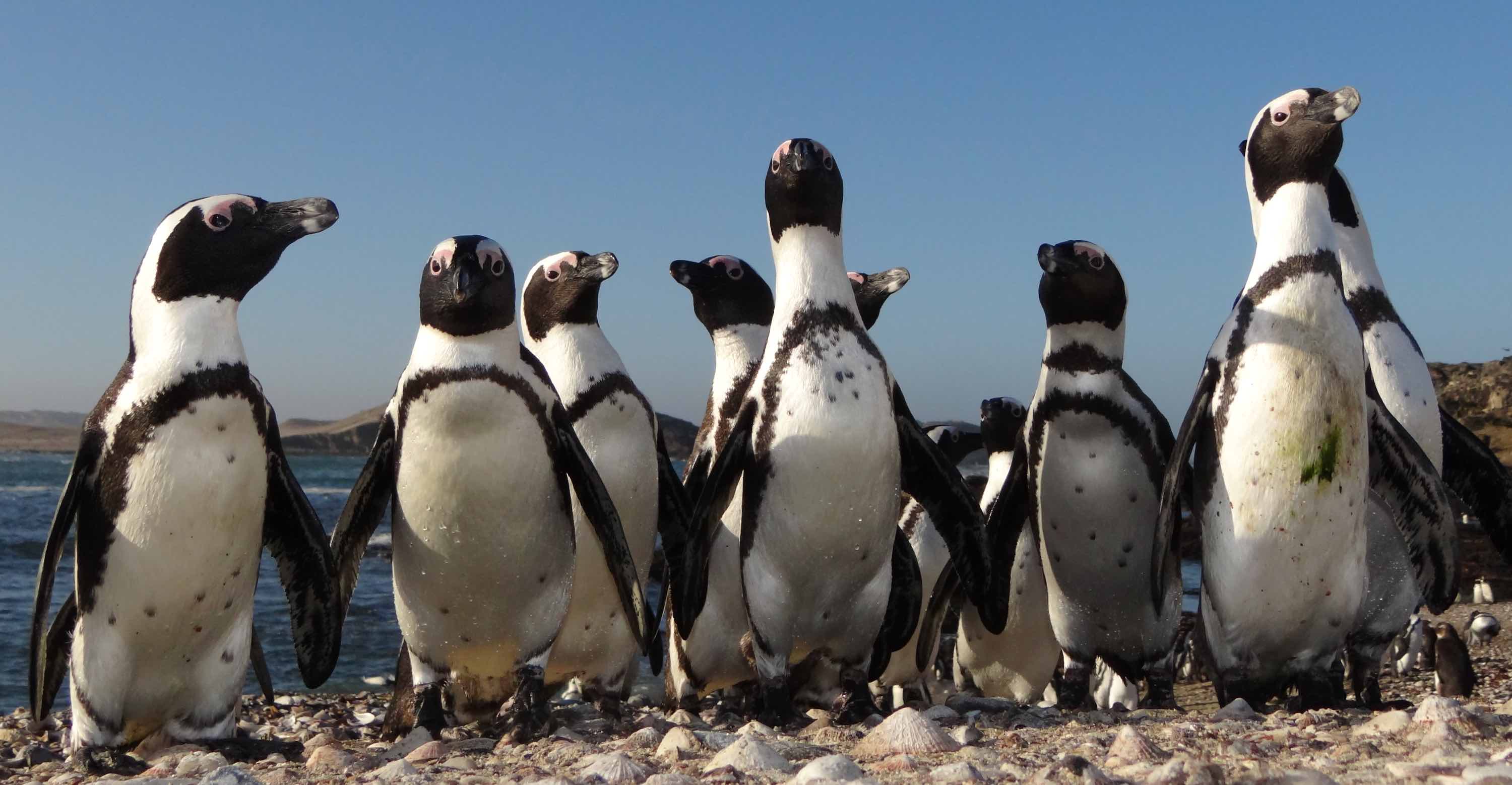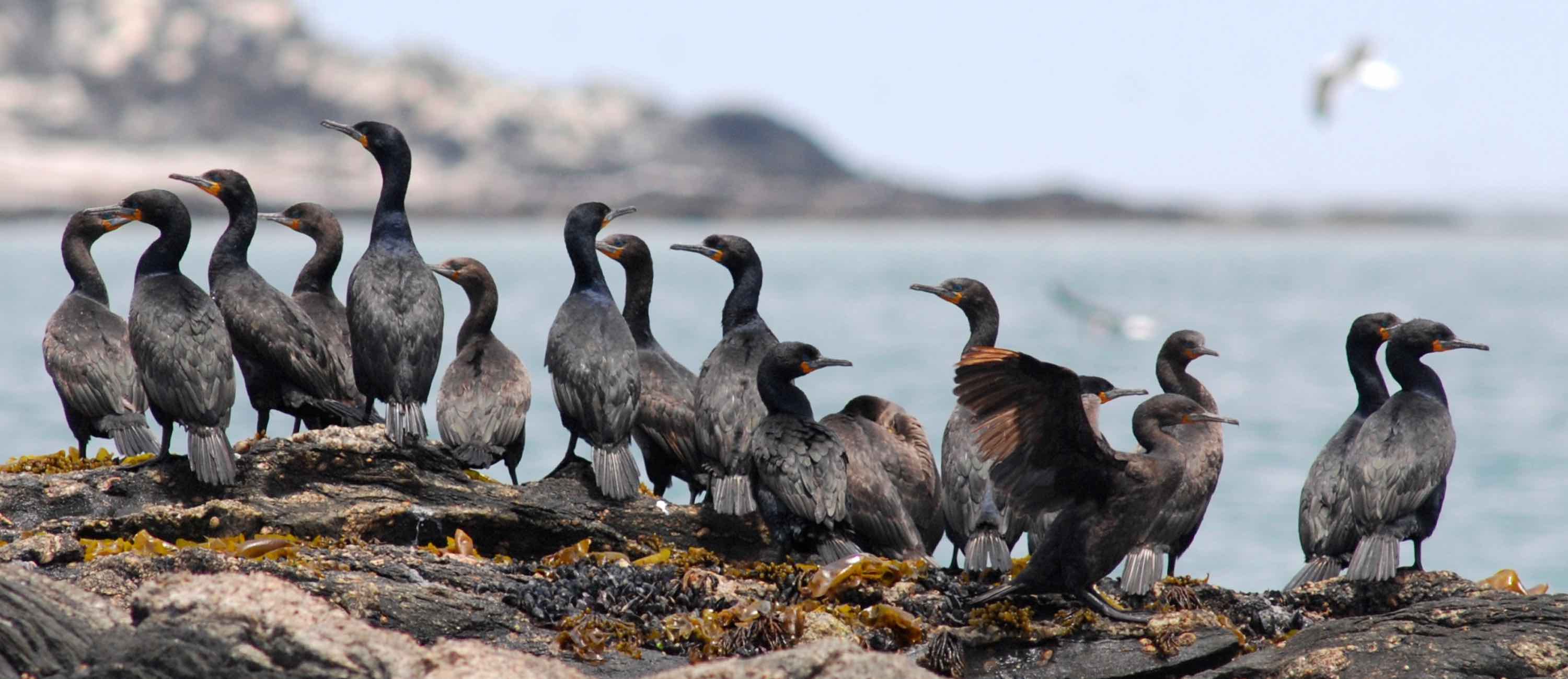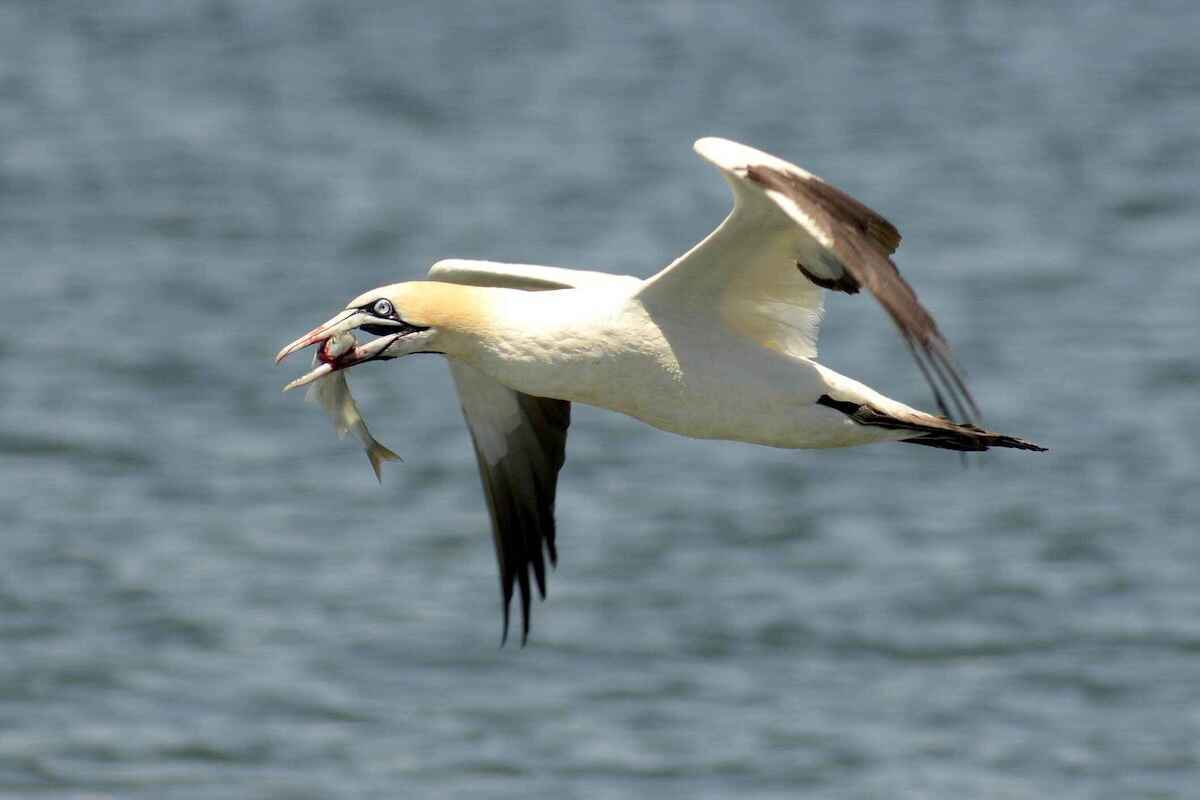
Namibia's sardine (pilchard) fish stocks have been in a critical state of depletion since long before the Fishrot scandal rocked the country. This disaster for the fisheries sector could have been avoided if we had paid attention to the plight of our indigenous seabirds.
A recent article by Robert Crawford and colleagues, published in the Namibian Journal of the Environment, reveals how four seabird species have navigated their hunger and what we need to do to restore our marine fisheries. Seabirds can tell us a lot about the health of our marine fisheries, if we are willing to listen.
The Benguela Ecosystem and its Endangered seabirds
Namibia's coastal waters are part of the Benguela Ecosystem, a marine ecosystem extending from the town of Benguela in Angola through to South Africa's southern tip. It is named after the Benguela Current, a cold ocean current that flows northward along this coastline. This current brings nutrient-rich waters from the deep ocean to the surface, supporting a highly productive and diverse marine environment. This ecosystem is known for its rich biodiversity and is a crucial habitat for a vast number of marine species, including some seabirds that occur nowhere else on earth (known as endemic species).
The Benguela Ecosystem hosts fifteen seabird species, seven of which are endemic to this region. Four of these endemic seabird species are endangered according to the global IUCN red list: the African penguin, the Cape gannet, the Cape cormorant, and the bank cormorant. These charismatic birds not only captivate birders with their distinctive appearances but also play crucial roles in the marine environment.
While these special birds deserve research and protection in their own right, they can also provide information about the state of Namibia's fish stocks and thus increase the long-term sustainability of the fishing sector. According to Dr Crawford and colleagues, each of these species has reacted differently to plummeting fish stocks, particularly the depletion of sardines that are a valuable source of food for humans and birds. If we know more about how birds respond to over-fishing, we can relate information on bird behaviour and breeding success to the state of our fisheries.
The African Penguin: lower breeding success
The African penguin is one of the smallest penguin species in the world. They are found in large colonies along the southwest coast of Africa from Namibia to Port Elizabeth, mostly breeding on coastal islands. They are characterised by a sharply pointed beak, black feet and an array of black, white and grey waterproof feathers. Each penguin's feather patterns are distinct and unique like human fingerprints. They communicate through their unique vocalisations and body language. They have a patch of bare skin above each eye, which helps them stay cool when hunting fish.
The penguins reach sexual maturity around four years of age and incubate their eggs for up to 40 days. When food is scarce their breeding patterns are disrupted and they produce fewer young ones. According to Dr Crawford and his research team, the breeding success of African Penguin is closely related to sardine and anchovy numbers and distribution, which are their main prey species.
In Namibia, the collapse of the sardine fishery led to a 90% decline in breeding penguins between 1956 and the early 2000s. Increases in anchovy stocks and the recovery of sardines in South African waters saved the species, as penguin colonies were more successful down south. When African penguins start breeding successfully and their colonies on the islands off Namibia start to increase again, it will be a good indication that our sardine fish stocks are recovering.

The Cape Gannet: switching to less nutritious food sources
The Cape gannet is known for its striking appearance, with predominantly white plumage and distinctive black wingtips. One intriguing fact about the Cape gannet is its exceptional diving ability. These seabirds are known for their impressive plunge-diving skills, reaching depths of up to 30 meters (100 feet) in search of prey, making them skilled hunters in the oceanic environment. The Cape gannet is named after its common habitat along the coast of southern Africa, particularly around the Cape of Good Hope, with its largest breeding colony on Bird Island in Algoa Bay, South Africa. Like the African penguin, the Cape gannet also faces the threat of food scarcity, which has drastically reduced its population.
Cape gannets primarily feed on fish, particularly schooling fish like sardines and anchovies. They are also known to consume other small fish species, squid and crustaceans when available. They have massive breeding colonies, although they only breed on six islands off the South African and Namibian coastlines. Overfishing depletes the availability of fish and can lead to lower breeding success, as parent seabirds may struggle to find enough nourishment to feed their chicks.
In Namibia, gannets historically fed predominantly on sardines, their preferred prey. Since the collapse of sardine stocks in the early 1970s, their diet is now dominated by less nutritious food sources such as the horse mackerel, saury and juvenile snoek and the discards from hake trawlers. When gannets are forced to switch to these poor quality food sources chick growth and survival rates decline. A good indication of an increase in sardine stocks is when more Cape gannet chicks survive until they fledge, revealing a better quality diet.
The Cape Cormorant: moving colonies to more productive areas
The Cape cormorant is native to the southern coasts of Africa, particularly around the Cape of Good Hope just like the Cape gannet. Cormorants are known for their diving and swimming abilities. Cape cormorants have dark plumage, with a glossy black colour, and they often have a distinctive white patch on their thighs. They are monogamous birds that nest in colonies, residing in large and densely populated groups where each breeding pair vigorously protects their nesting site. Their nests are commonly situated on offshore islands, cliffs, islands within coastal wetlands, artificial guano platforms, moored boats, and shipwrecks.
Cape cormorants frequently hunt in groups, capturing schooling fish like pilchards, anchovies, and sand eels by diving into the upper layer of the ocean (known as the epipelagic region). When food is scarce, Cape cormorants, like some other cormorant species, often skip or abandon breeding or delay their first breeding attempt.
Unlike the Cape gannets that prefer to return to the locations where they were born in order to breed, Cape cormorants may move to different colonies in response to fish availability. A study by John Mendelsohn suggested that Cape cormorants responded to the decline in Namibia's fish stocks by moving to islands off the coast of Angola. If further research confirms this observation, the return of large Cape cormorant breeding colonies off Namibia's coast could be a good indication of recovering fish stocks.

The Bank Cormorant: smaller colony sizes
The bank cormorant closely resembles the Cape cormorant, although it is slightly larger with a thicker neck. It is commonly found along rocky shores, coastal cliffs, and islands, preferring habitats near the ocean. Like other cormorants, they are skilled divers and swimmers that hunt for fish underwater. They often breed in colonies, building nests on rocky cliffs or other suitable locations close to the sea. During the breeding season, adults may display white patches on the sides of the head and neck.
The bank cormorant is even more threatened than its close relative the Cape cormorant. Unlike the other three seabirds described here, the bank cormorant does not rely primarily on sardines. In Namibia, its key prey item is the bearded goby, while in South Africa it relies on the heavily fished West Coast rock lobster. Prolonged food scarcity may reduce colony sizes and lead to their extinction, as these cormorants are much less likely to move their colonies than their Cape cousins.
According to Robert Crawford and his research team, a severe reduction of bearded goby in central Namibia in 1994 was the most likely reason why bank cormorants declined around the same time. Bearded gobies are not as economically valuable as sardines, but their numbers may increase when sardines are overfished. Changes in colony sizes of bank cormorants would likely indicate changes in the local abundance of bearded gobies. When monitored alongside other seabird species that are more dependent on sardines, Bank Cormorants could indicate changes to the sardine-goby balance in the ecosystem.
How seabirds can help us and we can help them
Monitoring populations of the four key seabird species above can help to manage Namibian fish stocks for future generations. Monitoring seabird species in terms of their survival, reproduction and breeding colony sizes should become part of an ecosystem-based fisheries management approach in Namibia.
Using data from before and after the sardine fishery collapse, scientists can establish targets for seabird survival and behaviour that indicate sardine recovery to the point where fishing quotas can be issued again. Continued seabird monitoring can then be used in conjunction with data on fishing success rates to regulate quotas in future.
Seabirds play a crucial role in marine ecosystems, contributing to nutrient cycling and maintaining the balance of marine food webs, which makes them important to conserve beyond their role as fisheries indicators. Given that seabirds are central-place foragers that must return to nests when nesting, comprehensive marine planning that restricts fishing activities around key breeding colonies is essential for the conservation of marine seabirds. Managing the Namibian Islands Marine Protected Area (NIMPA), which encompasses many of the key bird breeding islands to the north and south of Lüderitz, is critically important. Areas around critical seabird breeding colonies must be designated as strict no-fishing zones to improve the reproductive success of these species. This strategy not only protects the seabirds directly but also indirectly preserves the integrity of the broader marine environment.
Another proactive conservation strategy involves the creation of breeding platforms in areas where fish stocks are not depleted, aiming to enhance the reproductive success of seabird populations. By strategically placing artificial nesting structures or platforms in these regions, we provide essential safe havens for seabirds to breed and raise their chicks without the pressures of competition for depleted fish resources. This approach supports the targeted species, but it is a temporary measure that won't help if fisheries management is not improved in the long term.
By looking after our seabirds, Namibia can chart a brighter future for the whole marine environment and the valuable fisheries sector that provides food and jobs for many citizens. An ecosystem-based approach to fisheries that incorporates our knowledge of seabirds will increase the resilience and productivity of our marine ecosystem that will benefit birds and humans for many years to come.
If you enjoyed this page, then you might also like:



For articles on similar topics, please click one of the following options:

We use cookies to monitor site usage and to help improve it. See our Privacy Policy for details. By continuing to use the site, you acknowledge acceptance of our policy.